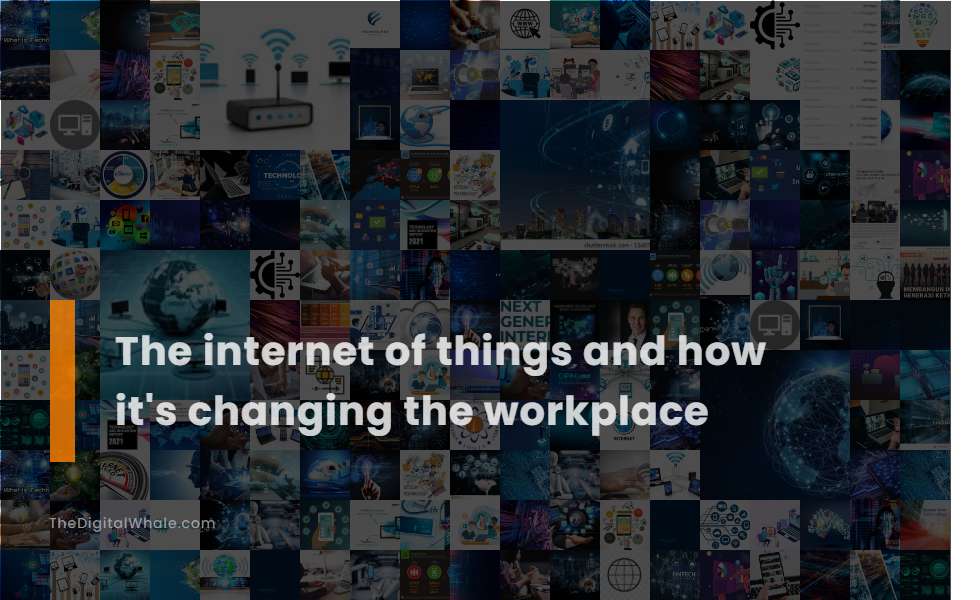The Internet of Things and How It's Changing the Workplace
What is the future of the internet of things? What is the future of the workplace? Let's find out more about The Internet of Things and How It's Changing the Workplace.

Automate Tasks: Automating office and manufacturing operations using IoT and VoIP connections.
In modern workplaces, the advent of IoT-enabled smart office automation is transforming how businesses operate by streamlining numerous tasks. This technology allows for the automatic adjustment of lighting, temperature, and occupancy levels, alongside the efficient management of meeting rooms. Additionally, it facilitates inventory tracking and enhances security measures, ultimately boosting efficiency and productivity. Similarly, IoT automation in office and manufacturing settings employs IoT devices and VoIP connections to further automate processes, optimize energy consumption, and improve equipment monitoring. This significant reduction in manual interventions not only heightens efficiency but also modernizes business operations effectively.
Enhance Workplace Safety: Monitoring workplace conditions and tracking employee behavior to mitigate risks and prevent accidents.
The Internet of Things (IoT) enhances workplace safety by monitoring environmental conditions such as air quality, temperature, and humidity, and tracking employee activity and behavior in real-time. This proactive approach allows organizations to identify and mitigate potential risks, thereby preventing accidents and ensuring a safer working environment. For a comprehensive exploration of how IoT is transforming safety protocols across industries, visit the Deskera Blog.
Optimize Energy Usage: Using smart devices to control lighting and temperature, extending equipment lifespan and reducing costs.
The adoption of the Internet of Things (IoT) is revolutionizing workplace energy management. By automating elements such as lighting, HVAC systems, and thermostats according to occupancy levels and time of day, IoT effectively reduces energy consumption and extends the lifespan of equipment through predictive maintenance. This approach not only decreases energy bills but also cuts down on operational costs. In particular, the integration of [IoT](https://appinventiv.com/blog/iot-in-energy-management/) in office environments optimizes energy usage with sensors that adjust lighting and heating/cooling based on room occupancy and natural daylight. This ensures no energy is wasted while maintaining a comfortable work environment. Furthermore, employees have the flexibility to modify settings via mobile apps to meet their individual preferences, further enhancing the sustainability of the workplace.
Improve Collaboration: Facilitating better interactions through telepresence robots and advanced video conferencing systems.
The Internet of Things (IoT) is enhancing workplace collaboration through telepresence robots and advanced video conferencing systems, allowing remote employees to actively participate in meetings, engage in real-time interactions, and feel more connected and included in the team, thereby fostering unity and stronger communication across distances. IoT-enabled video conferencing systems provide high-quality audio and video, automatic adjustments for lighting and sound, and seamless integration with other productivity tools, ensuring a smooth and immersive meeting experience. For an in-depth exploration of how these technologies are revolutionizing teamwork, visit Virtual Collaboration with Robots: Revolutionizing Teamwork.
Track and Reorder Supplies: Using IoT sensors to maintain inventory levels and trigger alerts for reordering.
IoT-enabled real-time inventory tracking employs sensors, RFID tags, and cloud computing to monitor inventory levels, triggering automatic reorder alerts when levels fall below predefined thresholds. This ensures timely replenishment and reduces the risk of stockouts and errors in inventory management. To explore more about how this system transforms inventory processes, delve into the detailed insights available at IoT Inventory Control.
Related:
What are the consequences of big data foremployment and human resources? What are the implications of big data for the healthcare industry? Let's find out more about Big Data and Its Impact On Employees.
Monitor Equipment: Continuous monitoring of machinery to predict and prevent failures, reducing downtime and repairs.
IoT Predictive Maintenance involves using interconnected devices and sensors to continuously monitor machinery, collecting real-time data on parameters such as temperature, vibration, and pressure. This data is analyzed to predict potential equipment failures, allowing for proactive maintenance and reducing downtime and repair costs. As highlighted in the discussion on the Power of Predictive Maintenance with IoT, IoT sensors installed on factory machinery track real-time data, which is analyzed using advanced algorithms to detect anomalies and predict mechanical failures. This predictive approach enables maintenance teams to intervene before issues escalate, reducing downtime, extending equipment lifespan, and saving costs.
Increase Employee Productivity: Tracking internal and external factors affecting employee safety and productivity.
The Internet of Things (IoT) enhances employee productivity by automating repetitive tasks, optimizing workflows, and ensuring uninterrupted access to resources, thereby streamlining processes and fostering effective communication and collaboration. Additionally, IoT devices elevate employee productivity by optimizing comfort levels, reducing unplanned downtime through predictive maintenance, and automating minor tasks such as managing office thermostats and coffee makers. These innovations collectively enhance workplace efficiency and boost overall employee satisfaction.
Enable Remote Management: Allowing managers to conduct face-to-face meetings remotely and monitor staff activities.
Remote IoT management enables the monitoring, operating, and controlling of IoT devices from a centralized location, allowing for real-time device status monitoring, remote diagnostics, and firmware updates. This offers significant advantages in efficiently managing and monitoring remote workers' activities and devices. By utilizing Remote IoT Device Management, the process facilitates remote control, diagnostics, and software updates, ultimately streamlining work processes for remote teams and enhancing productivity.
Enhance Operational Efficiency: Improving overall operational effectiveness through AI software, smart voice-enabled speakers, and other IoT devices.
The integration of the Internet of Things (IoT) significantly enhances operational efficiency within the workplace by leveraging advanced AI software and smart voice-enabled speakers such as Google Assistant, Alexa, and Siri. These technologies automate routine tasks, including scheduling meetings, setting reminders, and documenting meeting minutes, thereby reducing mundane workload and enabling employees to concentrate on more critical work. By employing IoT in the workplace, businesses experience improved operational effectiveness. The automation of office tasks, such as scheduling appointments and reminders, is managed efficiently, which boosts overall productivity. Moreover, as voice assistants continue to evolve, they're streamlining administrative activities, allowing for hands-free operation and increased workplace efficacy. To explore a detailed discourse on these advancements, you can visit the article on How the Internet of Things can revolutionize your workplace at Saviom's Blog.
Foster Flexible Work Environments: Enabling employees to work from anywhere by connecting devices and building systems.
The Internet of Things (IoT) is transforming workplaces by enabling flexible work environments through smart devices and systems. IoT technologies such as occupancy sensors, smart HVAC systems, and IoT-enabled apps optimize space utilization, energy consumption, and employee productivity. This evolution allows employees to work seamlessly from anywhere, whether in the office or remotely. For more insights into the evolving landscape, explore the potential of IoT in Office Workspaces.
Related:
What are the benefits of mobile technology in the workplace? What are the benefits of using mobile technology in the workplace? Let's find out more about The Rise of Mobile Technology In the Workplace.
